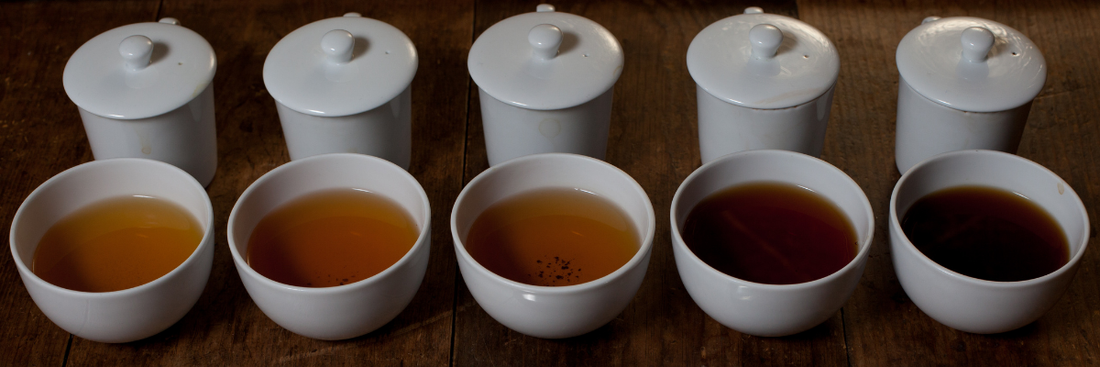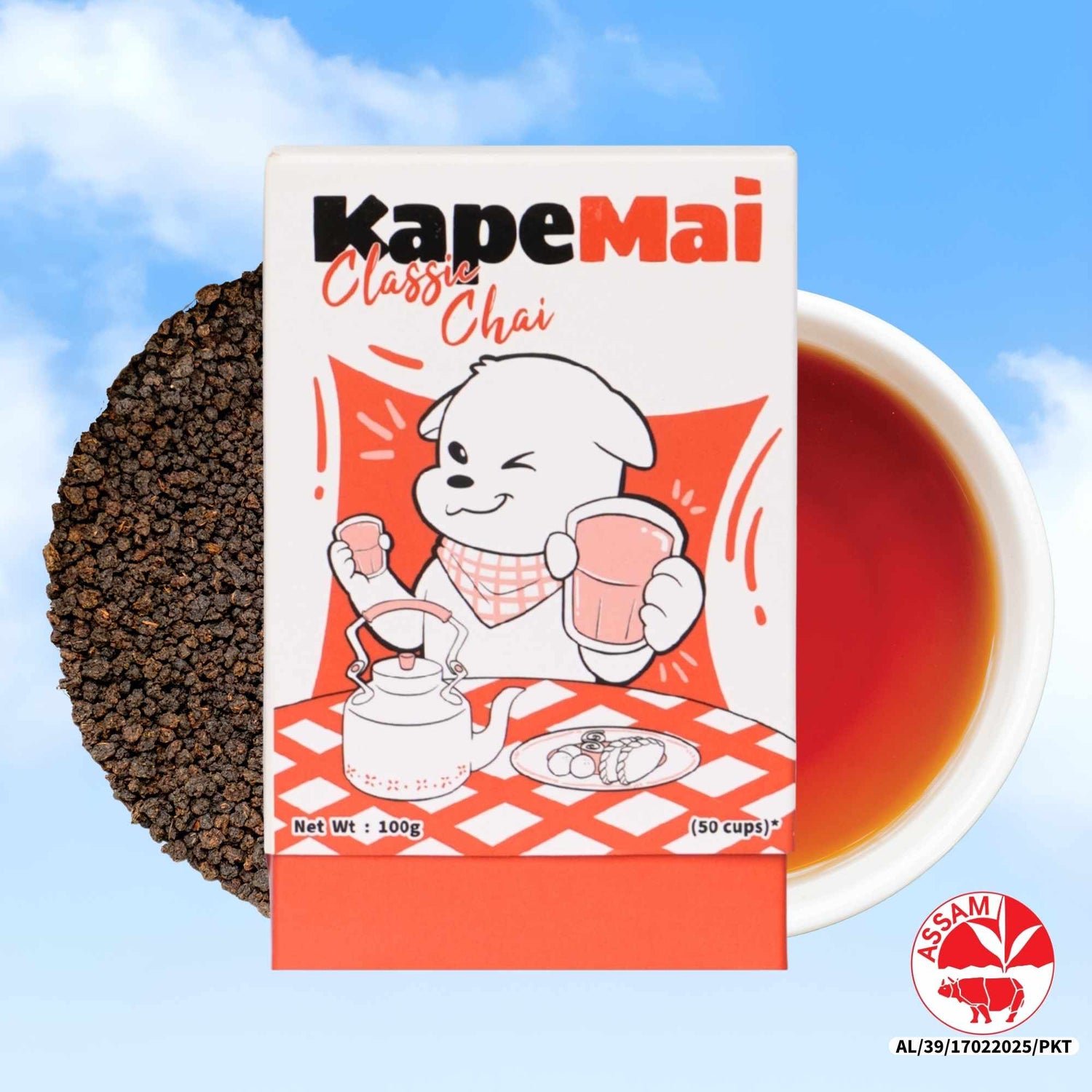
Re-Steeping Tea: How to Brew the Most Out of Your Leaves
Chorokape A. KapemaiShare
Love your tea so much you wish you could enjoy it more than once? Good news, you can! Welcome to the world of re-steeping tea, a simple yet powerful way to get the most flavor, value, and enjoyment out of your tea leaves.
Whether you're a seasoned sipper or just beginning your tea journey, this guide will help you understand how re-steeping works, which teas do best with it, and how to make each cup taste amazing. (At Kapemai, we’re all about getting the most out of every mindful cup.)
What Is Re-Steeping Tea?
Re-steeping tea means using the same tea leaves to brew multiple cups. Instead of tossing your leaves after one infusion, you brew them again, sometimes even a third or fourth time!
Loose-leaf teas are especially suited to this practice because they often contain whole leaves that release flavor gradually. That’s why many tea lovers (including us!) say the second (or third!) steep can actually taste better than the first.
Why Re-Steep Tea?
There are three great reasons to give re-steeping a try:
1. More Flavor, Less Waste
Good tea isn't cheap. Re-steeping helps you stretch each scoop further while still enjoying full-bodied flavor. (With Kapemai’s whole-leaf teas, every steep counts.)
2. Unique Taste in Every Cup
Each infusion reveals a different layer of taste. The first steep might be bold and brisk, while the second is smoother and sweeter.
3. Ritual and Mindfulness
Re-steeping tea slows you down. It’s a ritual that invites you to pause, reset, and enjoy every cup more consciously, just the way we like it at Kapemai.
Best Teas for Re-Steeping
While almost all loose-leaf teas can be re-steeped at least once, some do better than others. Here are the most re-steep-friendly varieties:
1. Oolong Tea
Oolong is famous for its multiple steeps; some high-quality oolongs can be brewed 5–7 times! Each steep unlocks new floral or creamy notes.
(Kapemai’s Oolong is a great example: smooth, fragrant, and built for slow sipping.)
2. Green Tea
Most green teas can handle 2–3 infusions. Just be gentle with water temperature (75–85°C) and reduce steep time slightly with each round.
3. White Tea
Delicate but complex, white tea can be steeped 2–3 times. The flavors are subtle, but they evolve beautifully over multiple infusions.
4. Pu-erh Tea
Aged pu-erh is a champion of re-steeping. You can get 6–8 cups from a single portion, sometimes even more!
5. Black Tea
While Indian black teas (like Assam or Darjeeling) are bold, they typically do best with 1–2 steeps. The second cup might be milder but still enjoyable.
Tip: Avoid re-steeping bagged tea. Most tea bags contain finely ground leaves that release all their flavor in the first brew. (That’s why Kapemai only offers loose leaf for now, no shortcuts, just better tea.)
How to Re-Steep Tea the Right Way
Re-steeping isn’t just pouring more hot water on your leaves; it’s an art. Here's how to get it right:
✅ Use Loose Leaf Tea
Whole leaves expand and release flavor slowly, making them perfect for re-steeping. (That’s why every Kapemai blend is made with whole leaf tea from trusted Indian gardens.)
✅ Steep in a Teapot or Infuser
A teapot with a strainer, a gaiwan, or even a reusable infuser basket allows the leaves to move freely and release more flavor with each brew.
✅ Adjust Time and Temperature
For every new steep:
-
Reduce steeping time slightly (for delicate teas), or
-
Increase it (for stronger or aged teas like pu-erh)
✅ Don’t Wait Too Long Between Steeps
Re-steep tea leaves the same day for the best flavor and freshness. If you're waiting longer, store the wet leaves in the fridge and use them within 12 hours.
How Many Times Can You Re-Steep Tea?
Here’s a general guideline:
|
Type of Tea |
Typical Number of Steeps |
|
Oolong |
3–7 |
|
Green Tea |
2–3 |
|
White Tea |
2–3 |
|
Black Tea |
1–2 |
|
Pu-erh |
5–8 |
The better the tea, the more steeps it can offer. (So if your Kapemai tea tastes just as good the second time around, that’s no accident.)
Does Re-Steeping Reduce Caffeine?
Yes, but not as much as you might think. Each steep releases a little less caffeine than the previous one, which can be ideal for evening sipping or if you’re cutting down.
Flavor Profile Changes With Each Steep
One of the coolest things about re-steeping tea is watching the flavor evolve:
-
First steep: Strongest, boldest flavor
-
Second steep: Milder, often smoother or sweeter
-
Third+ steeps: Subtle, delicate notes emerge
Each cup becomes a new experience. (It’s part of the magic we aim to bottle in every Kapemai blend tea that tells a story.)
Tips to Enhance Your Re-Steeping Experience
-
Use filtered water: It brings out the tea’s true flavor.
-
Take notes: Keep a tea journal to track how each tea performs across steeps.
-
Try Eastern-style brewing: In methods like gong fu cha, re-steeping is central to the experience with short, repeated infusions.
Final Sip: Is Re-Steeping Tea Worth It?
Absolutely. If you're using high-quality loose-leaf tea, re-steeping is a must-try. It's a cost-effective, sustainable, and deeply satisfying way to enjoy your tea.
Whether you’re craving that second cup in the morning or slowly sipping through a quiet afternoon, re-steeping gives your tea a second (and third) life.
So next time you brew a cup, don’t toss those leaves. Re-steep them and keep the good vibes flowing.
At Kapemai, One Cup Is Never the End
We believe good tea should be savored, not rushed. That’s why our loose-leaf teas from bold Assams to gentle Oolongs are chosen for depth, quality, and re-steepability. Explore our collection here, and let your tea leaves tell their full story.

